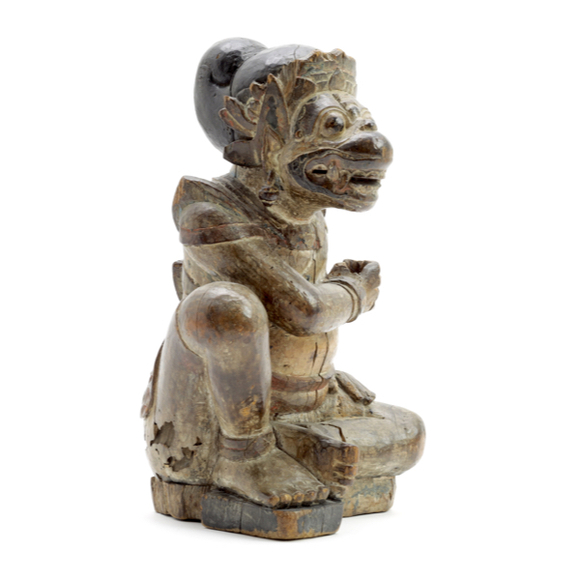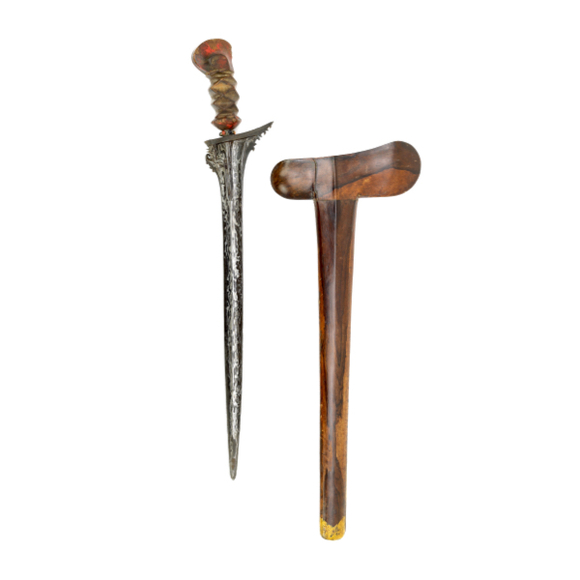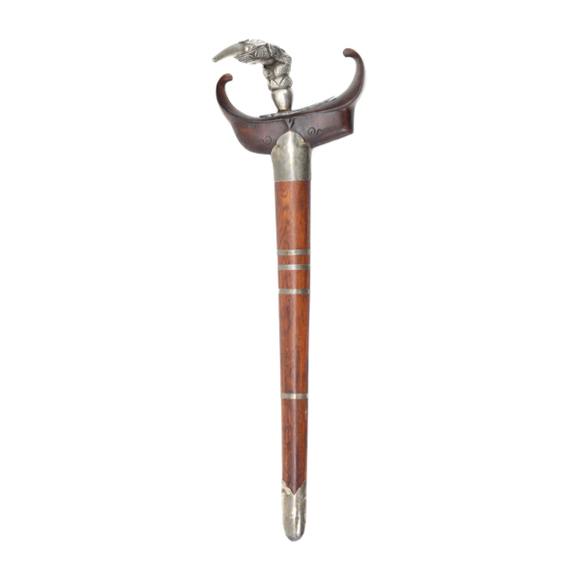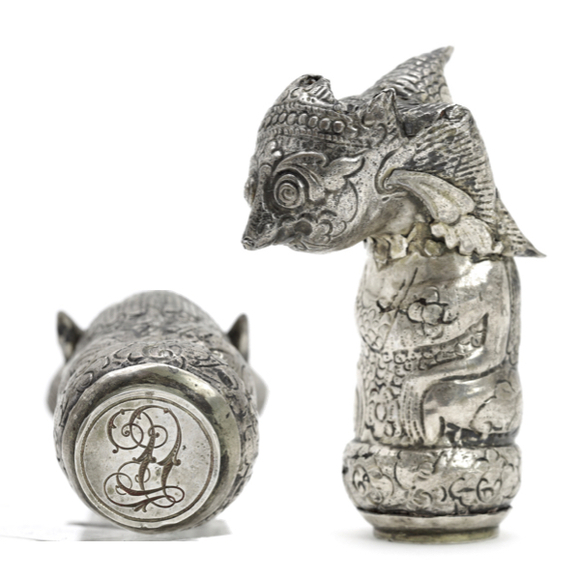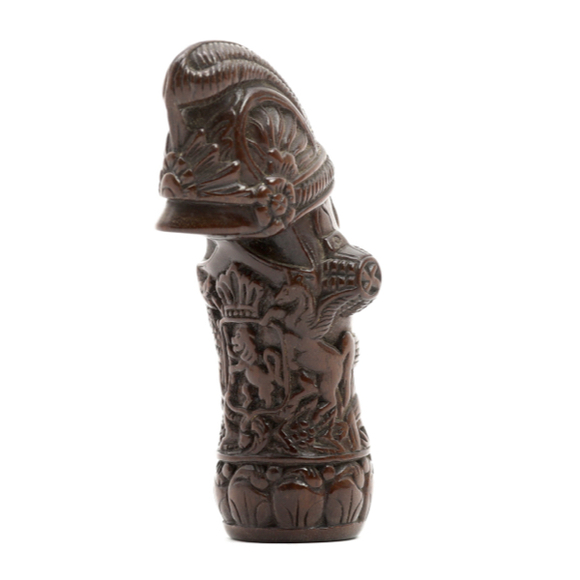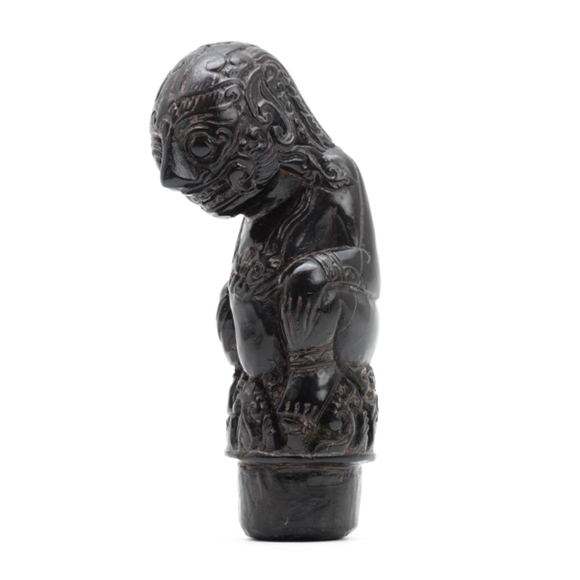A charming Balinese keris holder in the form of Hanuman, the brave monkey king.

65 cm
51 cm
Iron, nickel (pamor), gilt metal, semi-precious stones and glass, wood, pigment, lacquer
Bali, Indonesia
Late 19th to early 20th century
Ferdinand Blok (Java 1884 - Netherlands 1981)
Aalderink Oriental Art
Introduction
Balinese culture in many ways preserved elements of pre-Islamic Javanese court culture. This is still apparent in their keris, many of which still have the figurative hilts that were once common on Java as well. They were made more abstract after Java adopted Islam in the 16th century while Bali remained Hindu.
Balinese keris blades are typically finished to a smooth, dark stone-like surface with a bright silver nickel pamor pattern standing out.
This example
A large example with a blade of strong proportions. It has 9 luk or bends, a number associated with perfection. The iron blade is forged with iron and nickel, which are in high contrast after a special patination process. The nickel runs through the blade like the grain of wood. At the base of the blade is chiseled a demon’s head, Batara Kala, the Balinese version of the Hindu Kirtimukha; an all-devouring monster that among others was thought to remove evil.1
The gilt metal hilt is in the shape of Batara Bayu, God of the wind, and is further decorated with colored glass and semi-precious stones. The scabbard is of the rarer kojongan shape, slender, with a gentle widening at the tip.
Provenance
This keris comes from the collection of Ferdinand Blok. Mr. Blok was born in the village of Cimalaka on Java in 1884 and made a career in forest management in East Java. In 1931 his pension was granted, after which he settled in The Hague.2 In 1965 he loaned part of his collection to the Museum Voor Land en Volkenkunde in Rotterdam, today known as the Wereldmuseum. This keris appears in the accompanying publication from that year. Mr. Blok passed away on 4 November 1981 in the Hague. The keris was then obtained by Mr. Bouwman of Aalderink Oriental Art who kept it in his collection until 2021.3

Pages of Stamboeken Burgerlijke Ambtenaren,
describing Blok's birth and official career.
Dutch National Archive, inventory number: 2.10.36.22
Condition
There is an old repair at the top of the scabbard, back side. Probably an old period working life repair. The scabbard halves have split. A relatively easy fix that I have not addressed yet, but I could easily fix it if a potential buyer would wish so.
Importance
Balinese keris making is a living tradition and Balinese makers today have started to rival some of the better makers of the past. As such, Balinese keris with sound provenance are sought-after collectibles. Apart from the provenance, this is a particularly large and strong example with a thick, heavy blade of impressive proportions.
Notes
1. P. De Kat Angelino; Over de smeden en eenige andere ambachtslieden op Bali. Tijdschrift voor Indische Taal-, Land-, en Volkenkunde. Bataafs Genootschap van Kunsten en Wetenschappen. Deel LX. 1921.
2. Nationaal Archief: 2.10.36.22 Inventaris van het archief van het Ministerie van Koloniën: Stamboeken Burgerlijke Ambtenaren, 1836-1936.
3. Indonesië-Oceanië. Kunst uit particulier bezit. Rotterdam: Museum voor Land- en Volkenkunde, 1965.




















A Madurese keris hilt, carved from dark hardwood in the form of a Dutch cuirassier.

